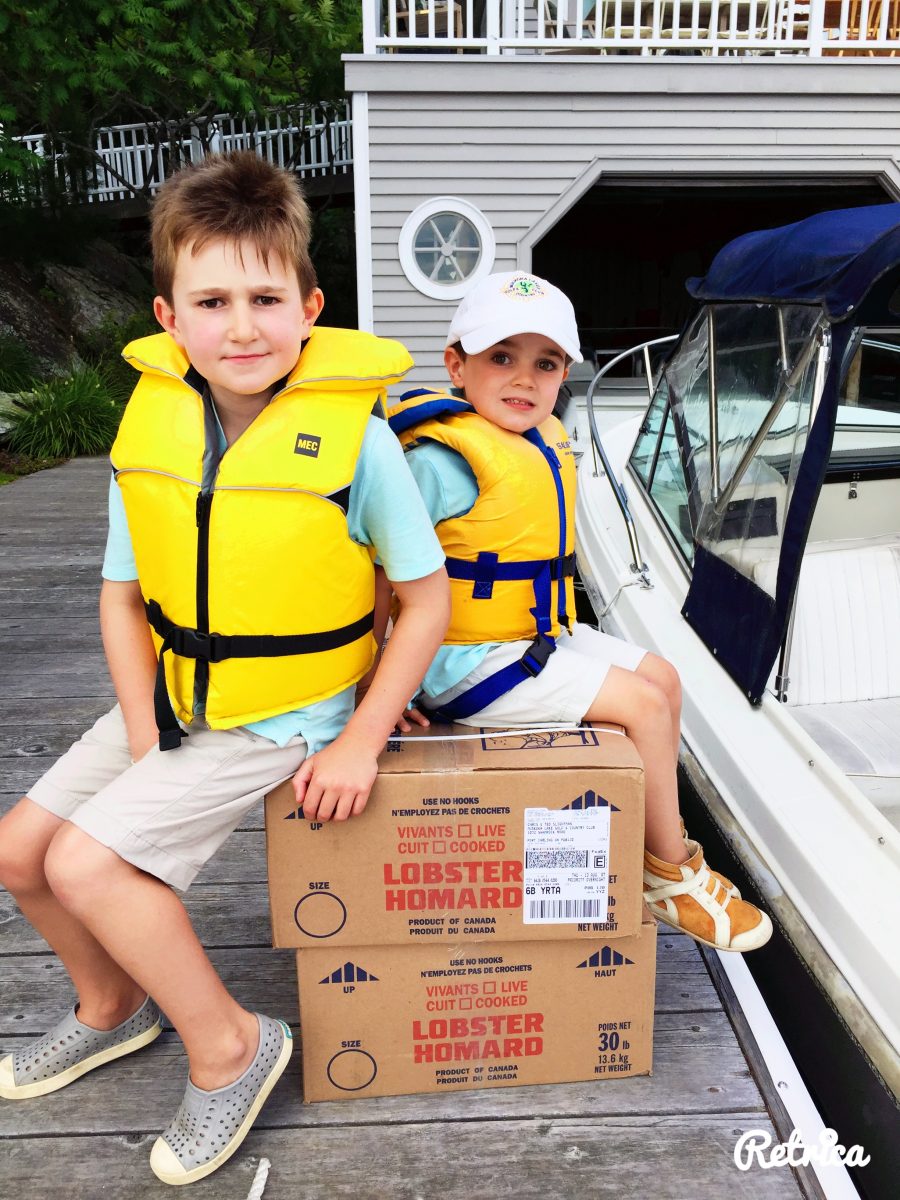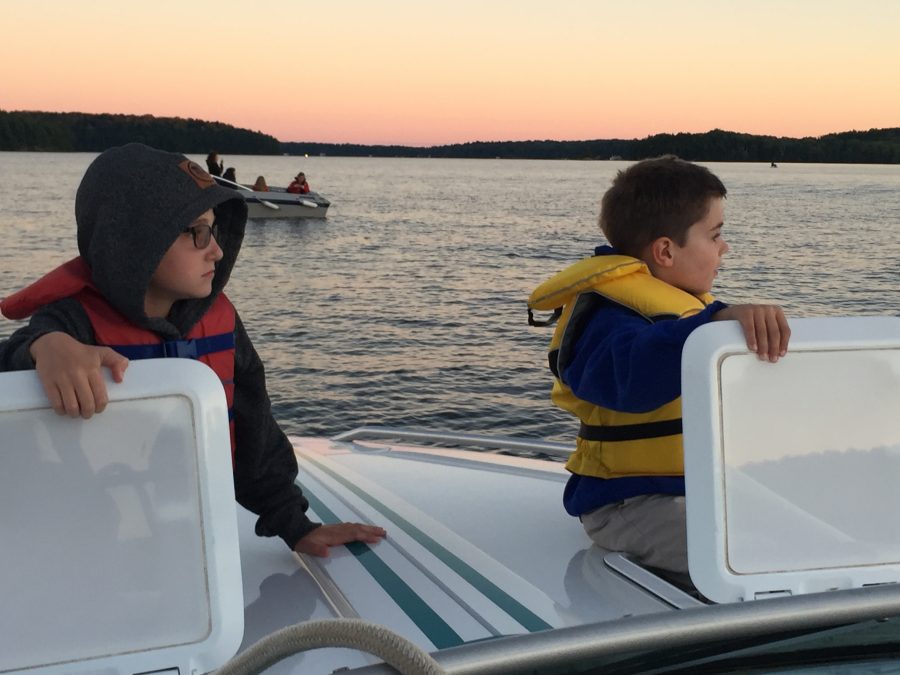Sibling Rivalry…Ugh! Why is it that our kids want to bug, bug and bug one another? Why can’t they just get along? These questions, amongst others around this topic of sibling rivalry are extremely common for all parents. If you find yourself asking these questions on a regular basis, just know that you are not alone. There are ways we can help our kids STOP all this fighting and I am going to offer you a few of these strategies in today’s post.

Today I am going to offer you one very important rule/tool to help decrease sibling rivalry in your home. One top strategy is to PUT ALL YOUR KIDS IN ONE BOAT. Of course, there are many tools you can use, but for the purpose of today’s post we are simply going to jump on board one! So, what does this mean to put all your kids in one boat? To begin explaining this, I want you to think about your kid’s arguments, bickering, and fighting as one entity. The situations that occur between your kids are between your kids. I want you to think about these situations in a new light. From now on, there are no longer victims and aggressors. There is no longer someone who started it and there is no longer the person who comes crying to you and in tears, getting coddled or protected. I am going to say it again loud and clear… From now on in regards to sibling rivalry,
ALL YOUR KIDS ARE ONE ENTITY. Therefore, ALL YOUR KIDS GO IN SAME BOAT!
Let’s Look At An Example of Sibling Rivalry In My House
I am going to tell you what happened other morning as Hudson (9 years) and Beckett (6 years) were up getting ready for school. I am going to show you how putting EVERYONE IN THE SAME BOAT will help you decrease sibling rivalry by lessening the need for sibling competition. Who knew that our reactions to our kid’s fighting, actually makes them fight more? I want to teach you how to put an end to this cycle. So, let’s dive into what happened in my house this week.
A typical morning in our house involves family breakfast at 7:00 am (my husband works late and we don’t get family dinners, so this is how me compromise to squeeze in family mealtime). This morning was no different than any other morning and it was a typical day for the Slighthams. Everyone seemed to be rested and in good spirits.at the breakfast table. After breakfast and clearing their dishes, up the boys marched to do their morning checklists to get themselves ready for school. I have no idea what happened or where things fell of the rails, but in a matter of minutes I heard them bickering and yelling at one another. Things seemed to be getting hot and heavy, but I continued to finish tidying the kitchen and left them to try and solve their problem. I know it’s not easy to stand back and give them their space.
NOTE: We all tend to want to jump in and try to put a stop to these sorts of instances, but its’ critical on multiple levels to let them try to solve their own problems. Their problems are not our problems and the sooner we learn this, as parents, the better off everyone will be.
SO, LET’S GET BACK TO MY STORY…The fighting escalated and before too long there was a slam of the door and the little one crying. At this moment I CALMY made my way upstairs. I acted like I knew nothing about anything! It was only a matter of minutes before Beckett, my 6 year old, came running in to tattle. He was yammering on and on about how Hudson kicked him and his shin was bleeding (it was a tiny scratch, but still not okay in our home) and how Hudson was being so mean. I didn’t respond and I said lets go to Hudson’s room so we can ALL chat about this.
KEY POINTS: I didn’t respond to one and I didn’t pick sides.
Yes, Beckett had a scratch, so I knew that Hudson had done something to him, but I also didn’t know what Beckett had done. Maybe he instigated Hudson’s frustration and maybe he didn’t, but if you don’t see it with your own two eyes, then you don’t know. At this point they were both trying to talk to me about their sides and I CALMY stated, “This is not my problem and I didn’t see what happened. This is your problem to solve. Unfortunately, due to the fact that hitting is an automatic privilege loss, BOTH of you will lose your IPAD for Saturday morning.” It’s important to have your consequences and boundaries set up in advance. For example: hitting or physical contact is an automatic privilege loss (one day of the weekend no Ipad) and both boys are aware of this. Therefore, when they choose to get physical, they know they are choosing to lose their privilege. You must be fair and follow through. A Point System like this one, from Today.com, can also help parents remain neutral when they get do get involved.
WHAT SHOULD I DO IF I GET INVOLVED?
When you get involved as a parent it’s critical to PUT EVERYONE IN THE SAME BOAT. Sure, Hudson did hit and Beckett and I saw the evidence. But, at this moment, if I had chosen to only taken Hudson’s privilege away it would have made Hudson feel unheard. It would have made Hudson feel like no matter what may have really happened to him didn’t matter. What if Beckett did hit Hudson? Now, my action of blaming only Hudson tells the boys that the person with the biggest injury and who comes crying to me first will not have a consequence. This is NOT FAIR. When we pick sides or punish one, we encourage more sibling rivalry. This type of parental involvement is not benefiting anyone.
PARENTS OFTEN CAUSE SIBLING RIVALRY
Often parents are the cause for sibling competition and rivarly and they are not even aware. We, as parents do things, such as pick sides, blame one, baby the little one, label our kids, etc. and when we do these types of things, we create anger inside our kids. Read “Why Can’t My Kids Just Get Along” to find our the TOP things PARENTS DO to cause sibling rivalry. They begin to develop feelings that they are not capable of solving anything on their own and that they need an adult to do it for them. They also develop a sense of competition to try and get you to pick their side instead of their sibling’s. As our kids begin to learn these behaviors, sibling rivalry increases. To decrease rivalry we can do our best to not get involved unless there is a safety issue (physical argument) or they cannot find a way to resolve the issue on their own and it’s escalating to an unhealthy level. Try letting your kids resolve their own issues first – One great tool for this is to teach them the 60 Seconds To Solve strategy. Remember: if you do get involved, you need to listen to both sides and then PUT EVERYONE IN THE SAME BOAT. This means each person involved gets the SAME CONSEQUENCE. Next time they are having an issue, you can remind them, “Please solve your problem OR I will need to solve it for you, which means all of you will have a consequence.” This usually gets them to solve it quickly or move on.
Once you get in the habit of putting all your kids in the same boat, you will notice a decrease in your kid’s sibling rivalry. You will witness them learning to solve their own problems and use conflict resolution skills. All of this will help decrease tattling, anger and competition. Give it a try and let me know how it goes in your home once everyone hops in the same boat!
